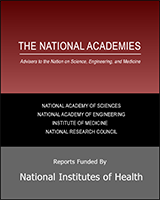NCBI Bookshelf. A service of the National Library of Medicine, National Institutes of Health.
Institute of Medicine (US) Roundtable on Environmental Health Sciences, Research, and Medicine. Environmental Public Health Impacts of Disasters: Hurricane Katrina: Workshop Summary. Washington (DC): National Academies Press (US); 2007.

Environmental Public Health Impacts of Disasters: Hurricane Katrina: Workshop Summary.
Show details- Black Belt Action Commission. Black Belt Action Commission. 2004. [accessed January 23, 2007]. http:
//blackbeltaction .org/BBAC_Overview.pdf. - Caesar EM, Gallo K, Kirkland E. Agriculture Street Landfill, New Orleans, Orleans Parish, Louisiana. Health Consultation. 1997. [accessed January 23, 2007]. http://www
.atsdr.cdc .gov/HAC/PHA/agriculturest/agr_p1.html. - CDC (Centers for Disease Control and Prevention). Carbon monoxide poisoning after Hurricane Katrina—Alabama, Louisiana, and Mississippi August–September 2005. Morbidity and Mortality Weekly Report. 2005. [accessed January 22, 2007]. pp. 996–998. http://www
.cdc.gov/mmwR /preview/mmwrhtml/mm5439a7.htm. [PubMed: 16208314] - CDC. West Nile Virus. 2005. [accessed January 23, 2007]. http://www
.cdc.gov/ncidod /dvbid/westnile/conf/index.htm. - Dubos R. Mirage of Health: Utopias, Progress, and Biological Change. Piscataway, NJ: Rutgers University Press; 1987.
- Environmental Health Tracking Project Team, Johns Hopkins University. America’s Environmental Health Gap: Why the Country Needs a Nationwide Health Tracking Network. 2000. [accessed May 21, 2007]. http:
//healthyamericans .org/reports/files/healthgap.pdf. - EPA (Environmental Protection Agency). Flood water test results: Chemical testing September 4, 2005. Response to 2005 Hurricanes. 2005. [accessed January 22, 2007]. http://www
.epa.gov/katrina /testresults/water /chem/090405/chem2005_09_04.html. - EPA. Summary of sediment testing from September 10–November 27, 2005: Hurricanes Katrina and Rita. Response to 2005 Hurricanes. 2005. [accessed January 23, 2007]. http://www
.epa.gov/katrina /testresults/water /chem/090405/chem2005_09_04.html. - IOM (Institute of Medicine). The Future of Public Health. Washington, DC: National Academy Press; 1988.
- NASA (National Aeronautics and Space Administration). Arctic Sea Ice Continues to Decline, Arctic Temperatures Continue to Rise in 2005. 2005. [accessed May 21, 2007]. http://www
.nasa.gov/centers /goddard/news /top-story/2005/arcticice_decline.html. - National Research Council. Risk Assessment in the Federal Government: Managing the Process. Washington, DC: National Academy Press; 1983. [PubMed: 25032414]
- NIEHS (National Institute of Environmental Health Sciences). NIEHS Annual Leadership Report: Indicators in Exposure Research. 2004. [accessed January 22, 2007]. http://www
.niehs.nih .gov/dert/council/2004/leadrshp .doc.11-11. - RTI International–University of North Carolina. Community-based participatory research: Assessing the evidence. AHRQ Evidence Reports, Numbers 6–120. 2004. [accessed January 23, 2007]. http://www
.ncbi.nlm.nih .gov/books/NBK37280/ - Rules and regulations. 65206-65212 Federal Register / Vol. 59, No. 241 / Friday, December 16, 1994/Rules and Regulations. 1994. [accessed January 31, 2007]. http://www
.epa.gov/superfund /sites/npl/f941216.htm. - Weis B, Balshaw D, Barr JR, Brown D, Ellisman M, Lioy P, Omenn G, Potter JD, Smith MT, Sohn L, Suk WA, Sumner S, Swenberg J, Walt DR, Watkins S, Thompson C, Wilson SH. Personalized exposure assessment: promising approaches for human environmental health research. Environmental Health Perspectives. 2005;113(7):840–848. [PMC free article: PMC1257643] [PubMed: 16002370]
- WHO (World Health Organization). Constitution of the World Health Organization. 1946. [accessed May 21, 2007]. http://www
.searo.who .int/LinkFiles/About_SEARO_const.pdf. - Wilson S, Suk W. Framework for environmental exposure research: The disease first approach. Molecular Interventions. 2005;5(5):262–267. [PubMed: 16249520]
- References - Environmental Public Health Impacts of DisastersReferences - Environmental Public Health Impacts of Disasters
- Pterocaesio digramma voucher PI-0086 cytochrome oxidase subunit 1 (COI) gene, pa...Pterocaesio digramma voucher PI-0086 cytochrome oxidase subunit 1 (COI) gene, partial cds; mitochondrialgi|2484105119|gnl|uoguelph|PHILA086 OI-5P|gb|OQ386087.1|Nucleotide
Your browsing activity is empty.
Activity recording is turned off.
See more...